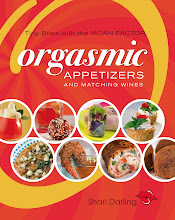
Johnnycake is fried flatbread originally made from cornmeal, salt and water. Today Johnnycake is made in a multitude of ways with added ingredients like fresh herbs and is an ideal partner to serve with wine.
Johnnycake was a staple in the pioneer American diet. Some people believe the name came from the word “Shawnee”, as in the Shawnee people, the American aboriginals who originally inhabited areas, such as Ohio, Pennsylvania and West Virginia. They were driven west finally settling in Oklahoma.
Now considered a Rhode Island food, Johnnycake is also believed to be a derivative from the term “journey-cake” as the Rhode Island accent omits the sound of “r”.
I personally believe these fried flatbreads come from the Shawnee peoples. This bread is similar to our Canadian bannock.
After preparing the batter, spoonfulls are dropped onto a hot greased griddle or fried in butter in an iron skillet. Johnnycake is buttery, salty and delicious.
Johnnycake was a staple in the pioneer American diet. Some people believe the name came from the word “Shawnee”, as in the Shawnee people, the American aboriginals who originally inhabited areas, such as Ohio, Pennsylvania and West Virginia. They were driven west finally settling in Oklahoma.
Now considered a Rhode Island food, Johnnycake is also believed to be a derivative from the term “journey-cake” as the Rhode Island accent omits the sound of “r”.
I personally believe these fried flatbreads come from the Shawnee peoples. This bread is similar to our Canadian bannock.
After preparing the batter, spoonfulls are dropped onto a hot greased griddle or fried in butter in an iron skillet. Johnnycake is buttery, salty and delicious.
It’s the ideal bread to serve with a big, fat white, such as Toasted Head Chardonnay, (CSPC #594341) $16.95. This is a delicious Chardonnay with loads of ripe pear fruit on the nose and palate with creamy, buttery texture. This wine has 14.5 percent alcohol and so offers thick viscoscity, experienced on the palate as fattiness.
This is one of my all time favourite fatty whites. I served this wine on New Year’s Eve, partnered with my 5 cheese mac and cheese. My guests moaned in delight. This white also works with lobster and crap in butter sauce, and alfredo or olive oil over pasta. It also complements duck, salmon, and anything else with celebrated fat!
To give this fried bread a hint of gourmet appeal, add to the recipe finely chopped fresh basil. Fresh basil sings of summer. Basil and Chardonnay are also fabulous partners. If you want to serve Johnnycakes in style for entertaining friends, add some seared fois gras alongside.
Here’s a simple Basil Johnnycake Recipe, serving 4 to 6 people.
1/2 cup flour
1 cup cornmeal
1 to 2 teaspoons sugar
1 teaspoon sea salt
1 egg, lightly beaten
1 cup hot milk
1 tablespoon shortening
½ cup finely chopped fresh basil
Kosher salt
Butter (as needed for frying)
Mix the dry ingredients, then stir in the remaining ingredients, except for the fresh basil. Fold the basil in last and separately. Melt butter in an iron skillet. Do not let brown. Drop batter (according to size of cake you want to make) into the skillet. Fry to golden brown on both sides. Remove from skillet. Season with salt. Serve hot.













